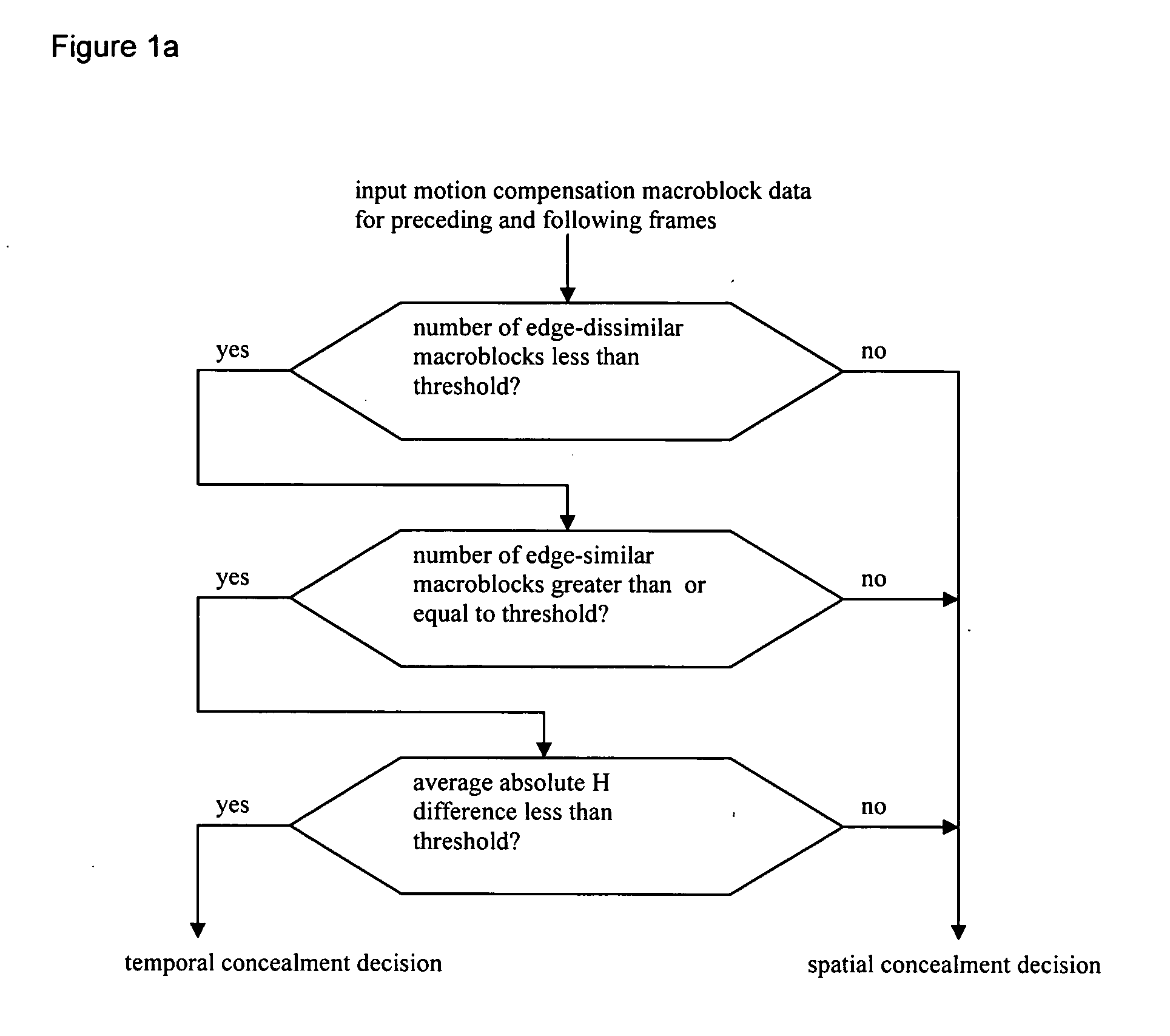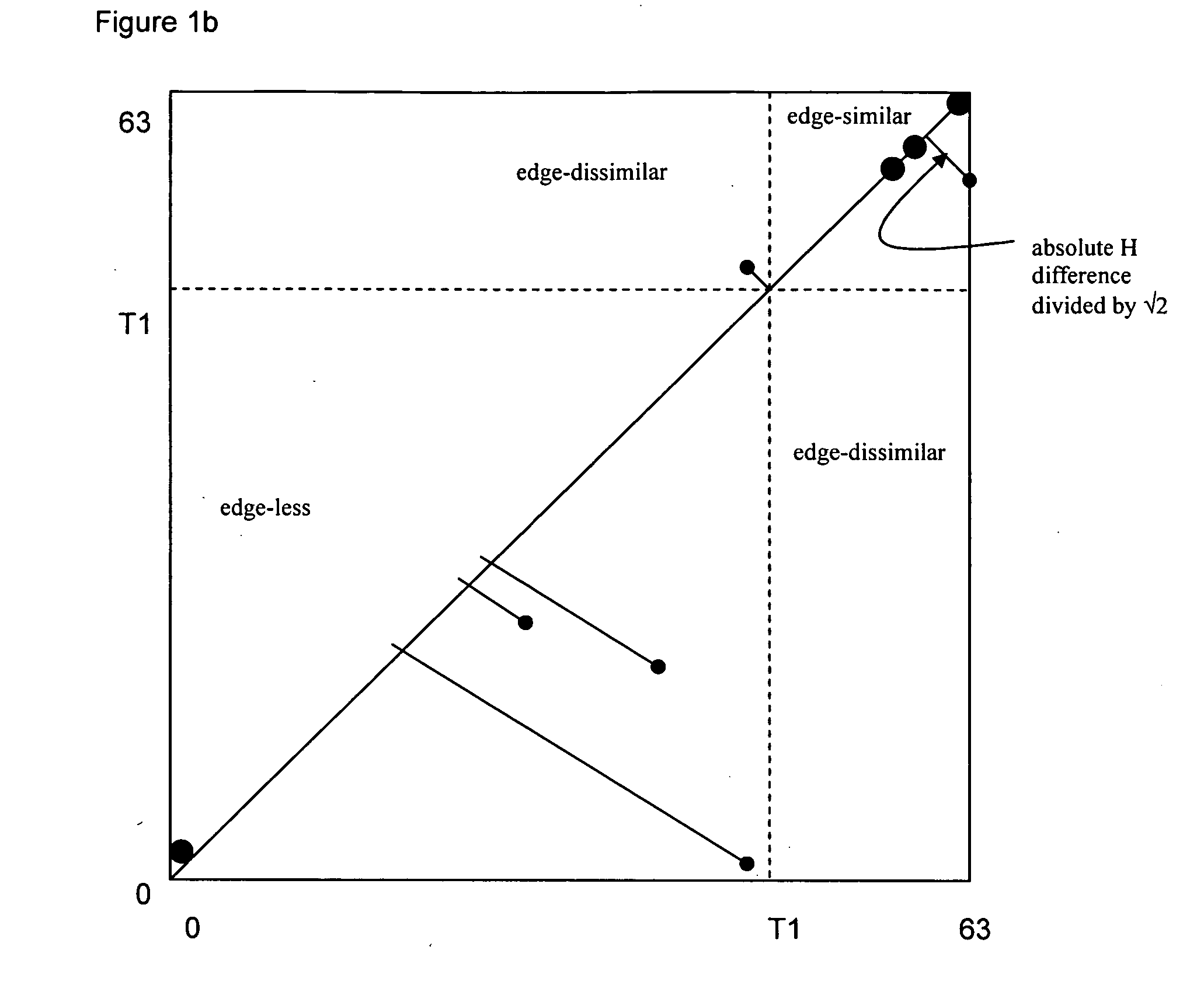Error concealment and scene change detection
a scene change detection and error concealment technology, applied in the field of digital video signal processing, can solve problems such as inability to provide information, error propagation from frame to frame, and inaccessibility
- Summary
- Abstract
- Description
- Claims
- Application Information
AI Technical Summary
Problems solved by technology
Method used
Image
Examples
Embodiment Construction
1. Overview
[0017] Preferred embodiment methods use information from the frame following an error detection to determine what kind of concealment should be performed. Even though this following frame cannot be fully reconstructed without a reference frame, preferred embodiment methods use a comparison of grey reconstructions or, more simply, luminance texture comparison to determine whether a scene change likely occurred at the error-lost frame, and to determine the preferred type of concealment. These methods are particularly useful if an I-frame is lost due to error corruption. The method could also be applied to conceal intra-coded macroblocks that are corrupted. Of course, this also provides scene change detection by treating an I-frame as a lost frame; see FIGS. 1a and 1d.
[0018] Preferred embodiment systems perform preferred embodiment methods with any of several types of hardware: digital signal processors (DSPs), general purpose programmable processors, application specific...
PUM
 Login to View More
Login to View More Abstract
Description
Claims
Application Information
 Login to View More
Login to View More - R&D
- Intellectual Property
- Life Sciences
- Materials
- Tech Scout
- Unparalleled Data Quality
- Higher Quality Content
- 60% Fewer Hallucinations
Browse by: Latest US Patents, China's latest patents, Technical Efficacy Thesaurus, Application Domain, Technology Topic, Popular Technical Reports.
© 2025 PatSnap. All rights reserved.Legal|Privacy policy|Modern Slavery Act Transparency Statement|Sitemap|About US| Contact US: help@patsnap.com



